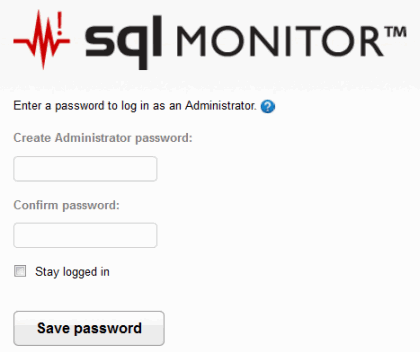Managing user roles
Published 28 October 2013
User roles allow SQL Monitor administrators to control user access to certain features. Each role is activated by creating a password and sharing it with users.
- Administrators have unrestricted access and can configure every feature in SQL Monitor.
- Standard users can manage and configure alerts, but can't configure custom metrics, custom alerts or alert email settings. They can view all pages except the Manage user roles, Licensing and Base Monitor connection pages.
- Read-only users can't make configuration changes, but they can view all pages except the Manage user roles, Licensing and Base Monitor connection pages.
There are no restrictions for the passwords. They can be as long or short as you like.
For more details of the restrictions applied to Standard and Read-only user roles, see User roles explained.
Creating the Administrator role
After you install or upgrade SQL Monitor, you can create a password to log in as an Administrator:
This password automatically creates the Administrator user role. Share the password with users who need access to every feature in SQL Monitor. After you log in, you can configure Standard and Read-only user roles.
Configuring user roles
Go to the Configuration tab. Under Application options, select Manage user roles:
The Manage user roles page can only be accessed by Administrators. It allows Administrators to change their own password, and create or change passwords for Standard and Read-only user roles.
Create Standard and Read-only user roles
To create the Standard and Read-only user roles, you need to create passwords for each.
- Click the Create password button for the role you want to create:
- Enter a password in the first text box, then reenter it in the second to confirm. Click Save to create the user role.
The message confirms that the password has been created successfully. Share this password with users that require restricted access to SQL Monitor. For details, see User roles explained.
Editing user roles
To edit an existing user role, click the Change password button, enter the new password into each of the text boxes displayed, then click Save.









